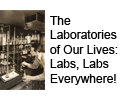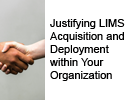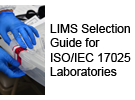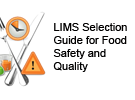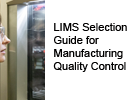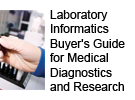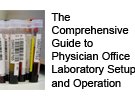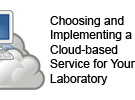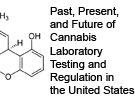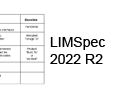Difference between revisions of "User:Shawndouglas/sandbox/sublevel1"
Shawndouglas (talk | contribs) |
Shawndouglas (talk | contribs) |
||
| Line 1: | Line 1: | ||
[[File:Workshop GDPR compliance at the 2019 Global Entrepreneurship Summit.jpg|right|500px]]In Chapter 2, we examined standards and regulations influencing cloud computing. We also noted that there's an "elephant in the room" in the guise of data privacy and protection considerations in the cloud. Many of the regulations and data security considerations mentioned there apply not only to financial firms, manufacturers, and software developers, but also laboratories of all shapes and sizes. At the heart of it all is keeping client, customer, and organizational data out of the hands of people who shouldn't have access to it, a significant regulatory hurdle. | |||
Most regulation of data and information in an enterprise, including laboratories, is based on several aspects of the data and information: its sensitivity, its location or geography, and its ownership.<ref name="SimorjayData14">{{cite web |url=https://download.microsoft.com/download/0/A/3/0A3BE969-85C5-4DD2-83B6-366AA71D1FE3/Data-Classification-for-Cloud-Readiness.pdf |format=PDF |title=Data classification for cloud readiness |author=Simorjay, F.; Chainier, K.A.; Dillard, K. et al. |publisher=Microsoft Corporation |date=2014 |accessdate=21 August 2021}}</ref><ref name="TolsmaGDPR18">{{cite web |url=https://www2.deloitte.com/nl/nl/pages/risk/articles/cyber-security-privacy-gdpr-update-the-impact-on-cloud-computing.html |title=GDPR and the impact on cloud computing: The effect on agreements between enterprises and cloud service providers |author=Tolsma, A. |publisher=Deloitte |date=2018 |accessdate=21 August 2021}}</ref><ref name="EusticeUnder18">{{cite web |url=https://legal.thomsonreuters.com/en/insights/articles/understanding-data-privacy-and-cloud-computing |title=Understand the intersection between data privacy laws and cloud computing |author=Eustice, J.C. |work=Legal Technology, Products, and Services |publisher=Thomson Reuters |date=2018 |accessdate=21 August 2021}}</ref> Not coincidentally, these same aspects are often applied to data classification efforts of an organization, which attempt to determine and assign relative values to the data and information managed and communicated by the organization. This classification in turn allows the organization to better discover the risks associated with those classifications, and allow data owners to realize that all data shouldn't be treated the same way.<ref name="SimorjayData14" /> And well-researched regulatory efforts recognize this as well. | |||
Take for example the European Union's [[General Data Protection Regulation]] (GDPR). The GDPR stipulates how personal data is collected, used, and stored by organizations in the E.U., as well as by organizations providing services to individuals and organizations in the E.U.<ref name="GoogleGDPR">{{cite web |url=https://cloud.google.com/security/gdpr |title=Google Cloud & the General Data Protection Regulation (GDPR) |publisher=Google Cloud |accessdate=21 August 2021}}</ref> The GDPR appears to classify "personal data" as sensitive "in relation to fundamental rights and freedoms," formally defined as "any information relating to an identified or identifiable natural person."<ref name="EUR-LexGDPR16">{{cite web |url=https://eur-lex.europa.eu/legal-content/EN/TXT/?uri=CELEX%3A32016R0679 |title=Regulation (EU) 2016/679 of the European Parliament and of the Council of 27 April 2016 on the protection of natural persons with regard to the processing of personal data and on the free movement of such data, and repealing Directive 95/46/EC (General Data Protection Regulation) (Text with EEA relevance) |work=EUR-Lex |publisher=European Union |date=27 April 2016 |accessdate=21 August 2021}}</ref> This is the sensitivity aspect of the regulation. GDPR also addresses location at many points, from data transfers outside the E.U. to the location of the "main establishment" of a data owner or "controller."<ref name="EUR-LexGDPR16" /> As for ownership, GDPR refers to this aspect of data as the "controller," defined as "the natural or legal person, public authority, agency or other body which, alone or jointly with others, determines the purposes and means of the processing of personal data."<ref name="EUR-LexGDPR16" /> The word "controller" appears more than 500 times in the regulation, emphasizing the importance of ownership or control of data.<ref name="EUR-LexGDPR16" /> However, cloud providers using hybrid or multicloud approaches pose a challenge to labs, as verifying GDPR compliance in these deployments gets even more complicated. The lab would likely have to turn to key documents such as the CSP's SOC 2 audit report (discussed later) to get a fuller picture of GDPR compliance.<ref name="TellingHowCloud19">{{cite web |url=https://cloudcomputing-news.net/news/2019/jun/03/how-cloud-computing-changing-laboratory-ecosystem/ |title=How cloud computing is changing the laboratory ecosystem |author=Telling, C. |work=CloudTech |date=03 June 2019 |accessdate=21 August 2021}}</ref> | |||
While data privacy and protection regulations like GDPR, the Personal Data Protection Law (KVKK), and California Consumer Privacy Act (CCPA) take a broad approach, affecting most any organization doing cloud- or non-cloud business while handling sensitive and protected data, some regulations are more focused. The U.S.' [[Health Insurance Portability and Accountability Act]] (HIPAA) is huge for any laboratory handling electronic protected health information (ePHI), including in the cloud. The regulation is so significant that the U.S. Department of Health & Human Services (HHS) has released its own guidance on HIPAA and cloud computing.<ref name="HHSGuidance20">{{cite web |url=https://www.hhs.gov/hipaa/for-professionals/special-topics/health-information-technology/cloud-computing/index.html |title=Guidance on HIPAA & Cloud Computing |author=Office for Civil Rights |work=Health Information Privacy |publisher=U.S. Department of Health & Human Services |date=24 November 2020 |accessdate=21 August 2021}}</ref> That guidance highlights the sensitivity (ePHI), location (whether inside or outside the U.S.), and ownership (HIPAA covered entities and business associates) of data. That ownership part is important, as it addresses the role a CSP takes in this regard<ref name="HHSGuidance20" />: | |||
<blockquote>When a covered entity engages the services of a CSP to create, receive, maintain, or transmit ePHI (such as to process and/or store ePHI), on its behalf, the CSP is a business associate under HIPAA. Further, when a business associate subcontracts with a CSP to create, receive, maintain, or transmit ePHI on its behalf, the CSP subcontractor itself is a business associate. This is true even if the CSP processes or stores only encrypted ePHI and lacks an encryption key for the data. Lacking an encryption key does not exempt a CSP from business associate status and obligations under the HIPAA Rules. As a result, the covered entity (or business associate) and the CSP must enter into a HIPAA-compliant business associate agreement (BAA), and the CSP is both contractually liable for meeting the terms of the BAA and directly liable for compliance with the applicable requirements of the HIPAA Rules.</blockquote> | |||
Clinical and public health laboratories are already affected by HIPAA, but understanding how moving to the cloud affects those HIPAA requirements is vital and not always clear.<ref name="HHSGuidance20" /> In particular, the idea of a CSP as a business associate must be taken seriously, in conjunction with its shared responsibility policy and compliance products. Laboratories that need to be HIPAA-compliant should be prepared to do their research on HIPAA and the cloud by reading [https://www.hhs.gov/hipaa/for-professionals/special-topics/health-information-technology/cloud-computing/index.html the HHS guide] and other reference material, as well consulting with experts on the topic when in-house expertise isn't available. | |||
Another area of concern for laboratories is GxP or "good practice" quality guidelines and regulations. Take for example the pharmaceutical manufacturer and their laboratories, which must take sufficient precautions to ensure that any manufacturing documentation (data, information, etc.) related to [[good manufacturing practice]] (GMP) requirements (e.g., via E.U. GMP Annex 11, U.S. 21 CFR Part 211, or Germany's AMWHV) is securely stored yet available for a specific retention period "in the event of closure of the manufacturing or testing site where the documentation is stored."<ref name="ECACloud20">{{cite web |url=https://www.gmp-compliance.org/gmp-news/cloud-computing-regulations-for-the-return-transmission-of-data-in-the-event-of-business-discontinuation |title=Cloud Computing: Regulations for the Return Transmission of Data in the Event of Business Discontinuation |work-ECA Academy |date=16 December 2020 |accessdate=21 August 2021}}</ref> As the ECA Academy notes, in the cloud computing realm, it would be up to the laboratory to get provisions added into the CSP's service-level agreement (SLA) to address the GMP's necessity for data availability, and to decide whether maintaining a local backup of the data would be appropriate (as in, perhaps, a hybrid cloud scenario). | |||
That part about the SLA is important. Although a formal contract will address agreed-upon services, it's usually in vague terms; the SLA, on the other hand, defines all the responsibility the cloud provider holds, as well as your laboratory, for the supply and use of the CSP's services.<ref name="CaldwellContracts19">{{cite web |url=https://www.asgnational.com/miscellaneous/contracts-vs-service-level-agreements/ |title=Contracts vs. Service Level Agreements |author=Caldwell, D. |work=ASG Blog |date=16 February 2019 |accessdate=21 August 2021}}</ref> These are your primary protections, along with vetting the CSP you use. This may be difficult, however, particularly in a public cloud, where auditing the security controls and protections of the CSP will be limited at best. To ensure GxP compliance in the cloud, your lab will have to examine the various certifications and compliance offerings of the CSP, and hope that the CSP staff handling your GxP data are trained on the requirements of GxP in the cloud.<ref name="McDowallClouds20">{{cite web |url=https://www.csolsinc.com/blog/clouds-or-clods-software-as-a-service-in-gxp-regulated-laboratories/ |title=Clouds or Clods? Software as a Service in GxP Regulated Laboratories |author=McDowall, B. |work=CSols Blog |publisher=CSols, Inc |date=27 August 2020 |accessdate=21 August 2021}}</ref> However, public cloud providers like Microsoft<ref name="MazzoliGood20">{{cite web |url=https://docs.microsoft.com/en-us/compliance/regulatory/offering-gxp |title=Good Clinical, Laboratory, and Manufacturing Practices (GxP) |author=Mazzoli, R. |work=Microsoft Documentation |publisher=Microsoft, Inc |date=30 November 2020 |accessdate=21 August 2021}}</ref> and Google<ref name="GoogleUsing20">{{cite web |url=https://cloud.google.com/security/compliance/cloud-gxp-whitepaper |title=Using Google Cloud in GxP Systems |publisher=Google Cloud |date=May 2020 |accessdate=21 August 2021}}</ref> provide their own documentation and guidance on using their services in GxP environments. As Microsoft notes, however, "there is no GxP certification for cloud service providers."<ref name="MazzoliGood20" /> Instead, the CSPs focus on meeting [[Quality management system|quality management]] and information security standards and employing their own best practices that match up with GxP requirements. Finally, they may also have an independent third party conduct GxP qualification reviews, with the resulting qualification guidelines detailing GxP responsibility between the CSP and the laboratory.<ref name="MazzoliGood20" /><ref name="GoogleUsing20" /> | |||
Ultimately, navigating the challenge of ensuring your laboratory's move to the cloud complies with necessary regulations is a tricky matter. Ensuring the CSP you choose actually meets HIPAA, GxP, and other requirements isn't always a guaranteed proposition by simply auditing the CSPs whitepapers and other associated compliance documents. However, experts such as Linford & Co.'s Nicole Hemmer and IDBS' Damien Tiller emphasize that the most comprehensive CSP documentation to examine towards gaining a more complete picture of the CSP's security is the SOC 2 (SOC for Service Organizations: Trust Services | |||
Criteria) report.<ref name="HemmerTrust19">{{cite web |url=https://linfordco.com/blog/trust-services-critieria-principles-soc-2/ |title=Trust Services Criteria (formerly Principles) for SOC 2 in 2019 |author=Hemer, N. |work=Linford & Company IT Audit & Compliance Blog |publisher=Linford and Co. LLP |date=18 December 2019 |accessdate=21 August 2021}}</ref><ref name="TillerIsThe19">{{cite web |url=https://storage.pardot.com/468401/1614781936jHqdU6H6/Whitepaper_Is_the_cloud_a_safe_place_for_your_data.pdf |format=PDF |title=Is the Cloud a Safe Place for Your Data?: How Life Science Organizations Can Ensure Integrity and Security in a SaaS Environment |author=Tiller, D. |publisher=IDBS |date=2019 |accessdate=21 August 2021}}</ref> A CSP's SOC 2 audit results outline nearly 200 information security, data integrity, data availability, and data retention controls and any non-conformities with those controls (the CSP must show those controls have been effectively in place over a six- to 12-month period). The SOC 2 report has other useful aspects, including a full service description and audit observations, making it the best tool for a laboratory to judge a CSP's ability to assist with regulatory compliance.<ref name="TillerIsThe19" /> | |||
==References== | ==References== | ||
{{Reflist|colwidth=30em}} | {{Reflist|colwidth=30em}} | ||
Revision as of 23:26, 3 February 2022
In Chapter 2, we examined standards and regulations influencing cloud computing. We also noted that there's an "elephant in the room" in the guise of data privacy and protection considerations in the cloud. Many of the regulations and data security considerations mentioned there apply not only to financial firms, manufacturers, and software developers, but also laboratories of all shapes and sizes. At the heart of it all is keeping client, customer, and organizational data out of the hands of people who shouldn't have access to it, a significant regulatory hurdle.
Most regulation of data and information in an enterprise, including laboratories, is based on several aspects of the data and information: its sensitivity, its location or geography, and its ownership.[1][2][3] Not coincidentally, these same aspects are often applied to data classification efforts of an organization, which attempt to determine and assign relative values to the data and information managed and communicated by the organization. This classification in turn allows the organization to better discover the risks associated with those classifications, and allow data owners to realize that all data shouldn't be treated the same way.[1] And well-researched regulatory efforts recognize this as well.
Take for example the European Union's General Data Protection Regulation (GDPR). The GDPR stipulates how personal data is collected, used, and stored by organizations in the E.U., as well as by organizations providing services to individuals and organizations in the E.U.[4] The GDPR appears to classify "personal data" as sensitive "in relation to fundamental rights and freedoms," formally defined as "any information relating to an identified or identifiable natural person."[5] This is the sensitivity aspect of the regulation. GDPR also addresses location at many points, from data transfers outside the E.U. to the location of the "main establishment" of a data owner or "controller."[5] As for ownership, GDPR refers to this aspect of data as the "controller," defined as "the natural or legal person, public authority, agency or other body which, alone or jointly with others, determines the purposes and means of the processing of personal data."[5] The word "controller" appears more than 500 times in the regulation, emphasizing the importance of ownership or control of data.[5] However, cloud providers using hybrid or multicloud approaches pose a challenge to labs, as verifying GDPR compliance in these deployments gets even more complicated. The lab would likely have to turn to key documents such as the CSP's SOC 2 audit report (discussed later) to get a fuller picture of GDPR compliance.[6]
While data privacy and protection regulations like GDPR, the Personal Data Protection Law (KVKK), and California Consumer Privacy Act (CCPA) take a broad approach, affecting most any organization doing cloud- or non-cloud business while handling sensitive and protected data, some regulations are more focused. The U.S.' Health Insurance Portability and Accountability Act (HIPAA) is huge for any laboratory handling electronic protected health information (ePHI), including in the cloud. The regulation is so significant that the U.S. Department of Health & Human Services (HHS) has released its own guidance on HIPAA and cloud computing.[7] That guidance highlights the sensitivity (ePHI), location (whether inside or outside the U.S.), and ownership (HIPAA covered entities and business associates) of data. That ownership part is important, as it addresses the role a CSP takes in this regard[7]:
When a covered entity engages the services of a CSP to create, receive, maintain, or transmit ePHI (such as to process and/or store ePHI), on its behalf, the CSP is a business associate under HIPAA. Further, when a business associate subcontracts with a CSP to create, receive, maintain, or transmit ePHI on its behalf, the CSP subcontractor itself is a business associate. This is true even if the CSP processes or stores only encrypted ePHI and lacks an encryption key for the data. Lacking an encryption key does not exempt a CSP from business associate status and obligations under the HIPAA Rules. As a result, the covered entity (or business associate) and the CSP must enter into a HIPAA-compliant business associate agreement (BAA), and the CSP is both contractually liable for meeting the terms of the BAA and directly liable for compliance with the applicable requirements of the HIPAA Rules.
Clinical and public health laboratories are already affected by HIPAA, but understanding how moving to the cloud affects those HIPAA requirements is vital and not always clear.[7] In particular, the idea of a CSP as a business associate must be taken seriously, in conjunction with its shared responsibility policy and compliance products. Laboratories that need to be HIPAA-compliant should be prepared to do their research on HIPAA and the cloud by reading the HHS guide and other reference material, as well consulting with experts on the topic when in-house expertise isn't available.
Another area of concern for laboratories is GxP or "good practice" quality guidelines and regulations. Take for example the pharmaceutical manufacturer and their laboratories, which must take sufficient precautions to ensure that any manufacturing documentation (data, information, etc.) related to good manufacturing practice (GMP) requirements (e.g., via E.U. GMP Annex 11, U.S. 21 CFR Part 211, or Germany's AMWHV) is securely stored yet available for a specific retention period "in the event of closure of the manufacturing or testing site where the documentation is stored."[8] As the ECA Academy notes, in the cloud computing realm, it would be up to the laboratory to get provisions added into the CSP's service-level agreement (SLA) to address the GMP's necessity for data availability, and to decide whether maintaining a local backup of the data would be appropriate (as in, perhaps, a hybrid cloud scenario).
That part about the SLA is important. Although a formal contract will address agreed-upon services, it's usually in vague terms; the SLA, on the other hand, defines all the responsibility the cloud provider holds, as well as your laboratory, for the supply and use of the CSP's services.[9] These are your primary protections, along with vetting the CSP you use. This may be difficult, however, particularly in a public cloud, where auditing the security controls and protections of the CSP will be limited at best. To ensure GxP compliance in the cloud, your lab will have to examine the various certifications and compliance offerings of the CSP, and hope that the CSP staff handling your GxP data are trained on the requirements of GxP in the cloud.[10] However, public cloud providers like Microsoft[11] and Google[12] provide their own documentation and guidance on using their services in GxP environments. As Microsoft notes, however, "there is no GxP certification for cloud service providers."[11] Instead, the CSPs focus on meeting quality management and information security standards and employing their own best practices that match up with GxP requirements. Finally, they may also have an independent third party conduct GxP qualification reviews, with the resulting qualification guidelines detailing GxP responsibility between the CSP and the laboratory.[11][12]
Ultimately, navigating the challenge of ensuring your laboratory's move to the cloud complies with necessary regulations is a tricky matter. Ensuring the CSP you choose actually meets HIPAA, GxP, and other requirements isn't always a guaranteed proposition by simply auditing the CSPs whitepapers and other associated compliance documents. However, experts such as Linford & Co.'s Nicole Hemmer and IDBS' Damien Tiller emphasize that the most comprehensive CSP documentation to examine towards gaining a more complete picture of the CSP's security is the SOC 2 (SOC for Service Organizations: Trust Services Criteria) report.[13][14] A CSP's SOC 2 audit results outline nearly 200 information security, data integrity, data availability, and data retention controls and any non-conformities with those controls (the CSP must show those controls have been effectively in place over a six- to 12-month period). The SOC 2 report has other useful aspects, including a full service description and audit observations, making it the best tool for a laboratory to judge a CSP's ability to assist with regulatory compliance.[14]
References
- ↑ 1.0 1.1 Simorjay, F.; Chainier, K.A.; Dillard, K. et al. (2014). "Data classification for cloud readiness" (PDF). Microsoft Corporation. https://download.microsoft.com/download/0/A/3/0A3BE969-85C5-4DD2-83B6-366AA71D1FE3/Data-Classification-for-Cloud-Readiness.pdf. Retrieved 21 August 2021.
- ↑ Tolsma, A. (2018). "GDPR and the impact on cloud computing: The effect on agreements between enterprises and cloud service providers". Deloitte. https://www2.deloitte.com/nl/nl/pages/risk/articles/cyber-security-privacy-gdpr-update-the-impact-on-cloud-computing.html. Retrieved 21 August 2021.
- ↑ Eustice, J.C. (2018). "Understand the intersection between data privacy laws and cloud computing". Legal Technology, Products, and Services. Thomson Reuters. https://legal.thomsonreuters.com/en/insights/articles/understanding-data-privacy-and-cloud-computing. Retrieved 21 August 2021.
- ↑ "Google Cloud & the General Data Protection Regulation (GDPR)". Google Cloud. https://cloud.google.com/security/gdpr. Retrieved 21 August 2021.
- ↑ 5.0 5.1 5.2 5.3 "Regulation (EU) 2016/679 of the European Parliament and of the Council of 27 April 2016 on the protection of natural persons with regard to the processing of personal data and on the free movement of such data, and repealing Directive 95/46/EC (General Data Protection Regulation) (Text with EEA relevance)". EUR-Lex. European Union. 27 April 2016. https://eur-lex.europa.eu/legal-content/EN/TXT/?uri=CELEX%3A32016R0679. Retrieved 21 August 2021.
- ↑ Telling, C. (3 June 2019). "How cloud computing is changing the laboratory ecosystem". CloudTech. https://cloudcomputing-news.net/news/2019/jun/03/how-cloud-computing-changing-laboratory-ecosystem/. Retrieved 21 August 2021.
- ↑ 7.0 7.1 7.2 Office for Civil Rights (24 November 2020). "Guidance on HIPAA & Cloud Computing". Health Information Privacy. U.S. Department of Health & Human Services. https://www.hhs.gov/hipaa/for-professionals/special-topics/health-information-technology/cloud-computing/index.html. Retrieved 21 August 2021.
- ↑ "Cloud Computing: Regulations for the Return Transmission of Data in the Event of Business Discontinuation". 16 December 2020. https://www.gmp-compliance.org/gmp-news/cloud-computing-regulations-for-the-return-transmission-of-data-in-the-event-of-business-discontinuation. Retrieved 21 August 2021.
- ↑ Caldwell, D. (16 February 2019). "Contracts vs. Service Level Agreements". ASG Blog. https://www.asgnational.com/miscellaneous/contracts-vs-service-level-agreements/. Retrieved 21 August 2021.
- ↑ McDowall, B. (27 August 2020). "Clouds or Clods? Software as a Service in GxP Regulated Laboratories". CSols Blog. CSols, Inc. https://www.csolsinc.com/blog/clouds-or-clods-software-as-a-service-in-gxp-regulated-laboratories/. Retrieved 21 August 2021.
- ↑ 11.0 11.1 11.2 Mazzoli, R. (30 November 2020). "Good Clinical, Laboratory, and Manufacturing Practices (GxP)". Microsoft Documentation. Microsoft, Inc. https://docs.microsoft.com/en-us/compliance/regulatory/offering-gxp. Retrieved 21 August 2021.
- ↑ 12.0 12.1 "Using Google Cloud in GxP Systems". Google Cloud. May 2020. https://cloud.google.com/security/compliance/cloud-gxp-whitepaper. Retrieved 21 August 2021.
- ↑ Hemer, N. (18 December 2019). "Trust Services Criteria (formerly Principles) for SOC 2 in 2019". Linford & Company IT Audit & Compliance Blog. Linford and Co. LLP. https://linfordco.com/blog/trust-services-critieria-principles-soc-2/. Retrieved 21 August 2021.
- ↑ 14.0 14.1 Tiller, D. (2019). "Is the Cloud a Safe Place for Your Data?: How Life Science Organizations Can Ensure Integrity and Security in a SaaS Environment" (PDF). IDBS. https://storage.pardot.com/468401/1614781936jHqdU6H6/Whitepaper_Is_the_cloud_a_safe_place_for_your_data.pdf. Retrieved 21 August 2021.

